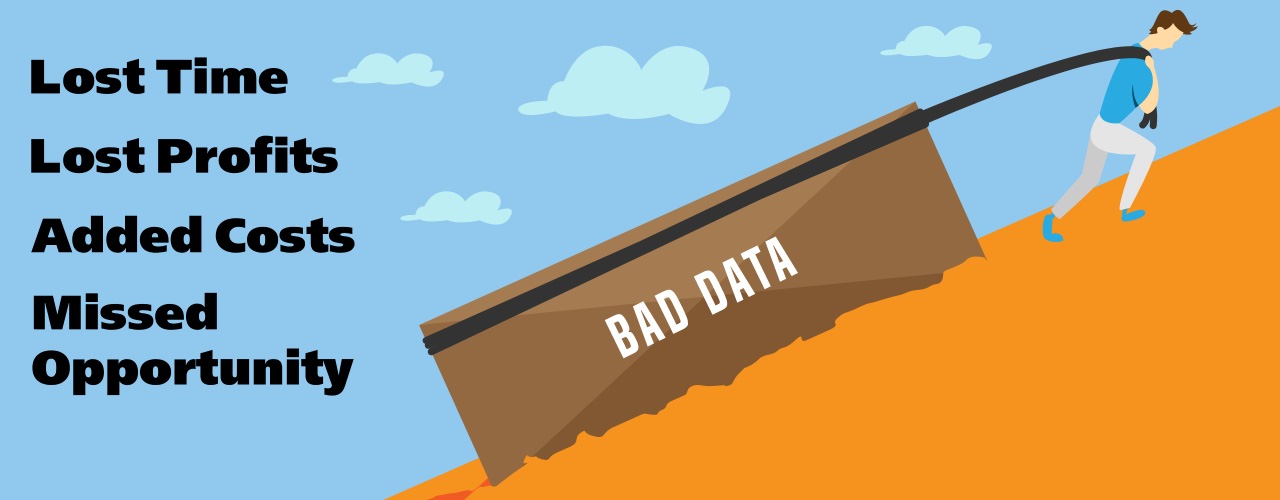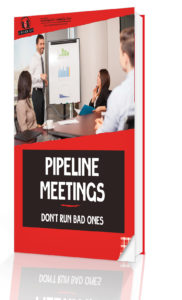Everyone is talking about big data analytics right now. I can’t say this is an “emerging” industry, but more of a large scale growth and sophistication. Thanks to the information era, we now have insights into human behavior we never had before.
Think of your cell phone. Google pulls so much in the way of data based on your GPS coordinates alone. You really are not actively completing a survey or giving feedback, it is happening behind the scene merely because you are carrying a GPS device.
Companies can now create a very accurate buyer persona because they can find your demographics, search times, likeliness to buy etc.
But what happens when you make decisions on bad data?
I sat in a meeting with sales leadership reviewing the quarterly sales data. Each quarter the leadership would come out with a sales initiative of something to sell more of. This particular quarter it was catering services. As we all sat in the meeting, the team that had the best margins were congratulated for their 80% profit margin on catering. Everyone clapped and smiled…while I had a look of horror on my face.
I kept looking around the room thinking I cannot be the only person who sees the major flaw in a number like that. Then someone, noticing my face, said to me, “I know you worked hard on this initiative but you still did great!”

Whether it was intentional or not, the winning team won on bad data.
You see, their max profit on a catering sale is 40%. The sales initiative was to increase catering revenue and aim to keep the full profit margin (aka, no discounts!). But in order to get to 80% profit when the max is 40%, something in the data was incorrect. Either the vendor wasn’t paid by the quarterly close to create a false margin or the bills associated with the cost of catering were allocated to a different accounting code. But something in the data was surely wrong.
Through the meeting, the answer became apparent. The team that won the catering initiative suddenly also had 300-400% increases in office supplies and meal and entertainment expenses.
At the end of the meeting, when just about everyone left, the CFO pulled me aside. She told me she noticed my reactions to the numbers. Then she said something rather interesting…
“Most people never question the data.”
After optimizing Google AdWords, the Google support team called me to discuss further optimizations I could implement. Naturally, they had a goal of selling me on a higher spend, but they also suggested I put my entire budget in the competitive markets and really beat my competition. They suggested this base on my targeting demographics and industry.
But then I asked the support specialist, “do you give this same recommendation to my competitors?” While he didn’t want to come right out with a yes, I was given the longer version of “we make our suggestions based on the data in your industry so, yes, if the data leads us to the same conclusion.”
I immediately changed my bid strategy and increased my bids in all the areas Google did not suggest.
Do you see why I did that?
Google just told me where my competition is putting their money, meaning I’d have a hard time winning the ad bid. But they also told me all of the areas they are NOT bidding.
Suddenly, I started converting leads at a significantly lower cost per conversion all because the data was misleading, even in the hands of the experts.
Within sales organizations, I find the actual pipeline to be filled with bad data.
I’ve sat in on many pipeline meetings, typically as the person working to gain insights into revenue predictions. With one company, I would listen to the optimism of the sales teams and then cross-compare what they thought they would sell vs what was actually selling.
The pipeline meetings were pretty far off to reality…but why?
There was one exception though. One sales guy had his predictions down to a science because they were extremely accurate. He would always hit his predicted close rate or slightly exceed it. And that wasn’t based on his quota either. He once hit just over 900% of his quota and he KNEW he was going to do it.
So how did he know his numbers and no one else was even close?
This salesperson strived for mastery. Within this, he really studied and defined the stages of the pipeline. He didn’t lie to himself about where people were or push deals down the pipeline that really were not in that stage yet to make his numbers look good. He even had the confidence to have a pipeline half the size of his colleagues because he KNEW his pipeline was clean and transparent.
For a while, the sales leaders didn’t know what to do with him. They kept pushing to get him into their data. They wanted to see the larger pipeline, more reach, and hit those targets based on the company averages.
He didn’t do it.
He refused to muddy his pipeline to just please leadership. Right as he was about to get a bad employee review, I found him. He walked me through his process of qualifying leads and how he moves them through the stages. It was sheer brilliance. By keeping his funnel in manageable numbers paired with highly qualified, he was able to go through detailed discovery notes and create deal strategies that were frankly hard to say no to. His close rate was evidence of the effectiveness of his process and data interpretation.
Needless to say, he did not get a bad review. He was promoted to a sales leader to begin teaching others his process and coaching his teams in strategy.
I could continue with further examples just like these, but my conclusion is simple…
If your people aren’t good, then your data is bad.
Data is only as good as the people interpreting it. Your data could show you that your buyer age is highest between the ages of 60-75 because you only advertised in newspapers, but what do you think would happen to that number if you started a social media campaign? Do you think that number may change? So many marketers would continue optimizing their efforts to that demographic without ever asking the classic chicken vs egg question.
Do you make decisions on bad data? Is your pipeline filled with mud water? Are your sales initiatives out of sync? How about your employee reviews?
Bad data is like water; takes the path of least resistance and infiltrates everything.



